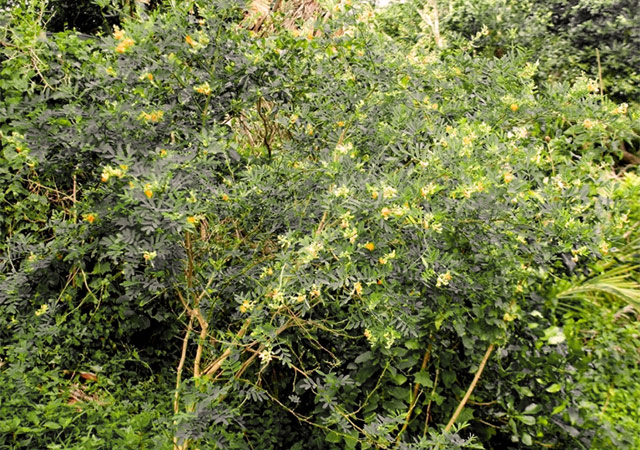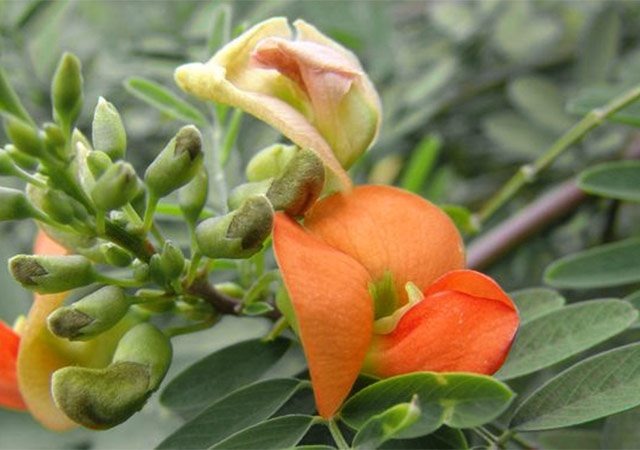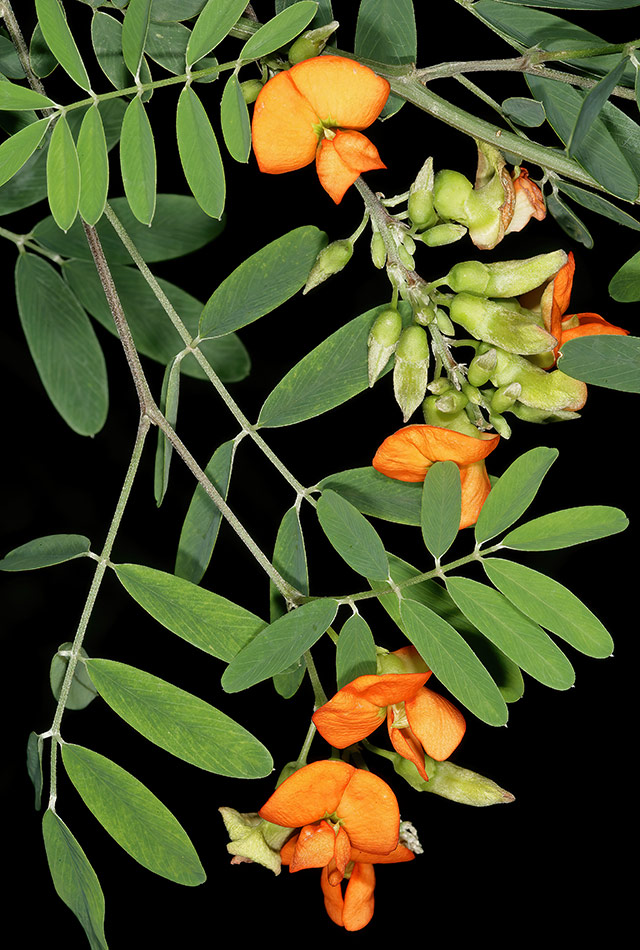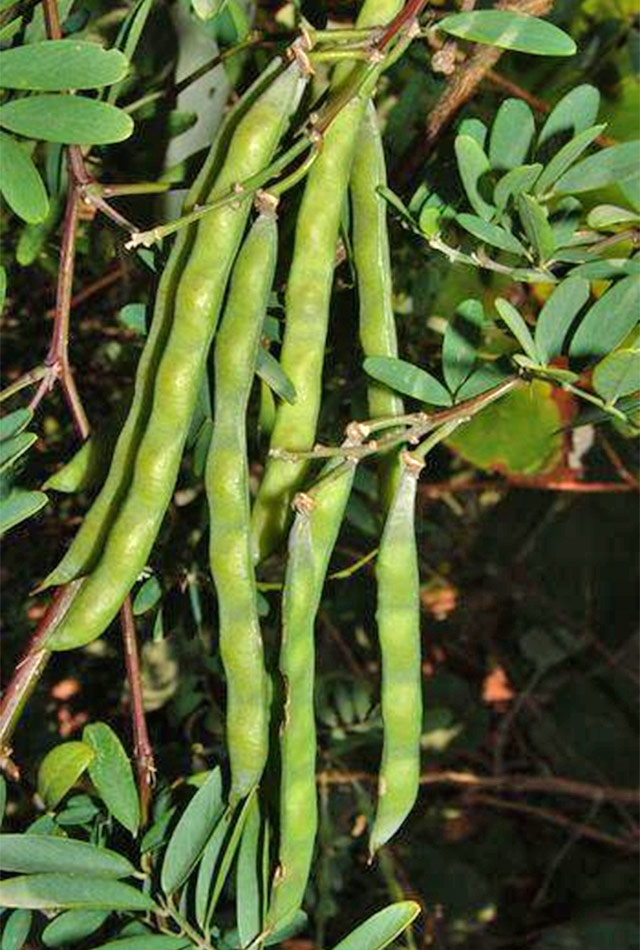NOTE: not all images have finished loading. Please cancel printing, wait a few moments and try to print again. All images should then be visible.
Protected trees in and around Munster
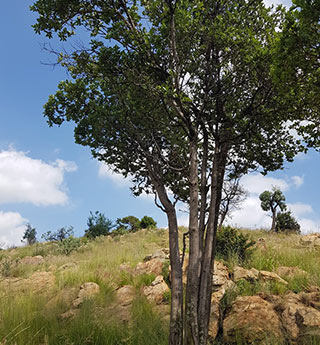 Some of the trees that grow in Munster and the surrounding
area are protected, due to their ecological and environmental
value, or because they are rare or threatened. Under the
National Forests Act no. 84 of 1998 (NFA) these trees
may not be cut, disturbed, damaged or destroyed and
their products may not be possessed, collected, removed,
transported, exported, donated, purchased or sold without
a license. If there is a legitimate reason why any of these
trees must be cut, a license must be obtained from the
Department of Forestry, Fisheries and the Environment
(DFFE) prior to the work commencing.
Some of the trees that grow in Munster and the surrounding
area are protected, due to their ecological and environmental
value, or because they are rare or threatened. Under the
National Forests Act no. 84 of 1998 (NFA) these trees
may not be cut, disturbed, damaged or destroyed and
their products may not be possessed, collected, removed,
transported, exported, donated, purchased or sold without
a license. If there is a legitimate reason why any of these
trees must be cut, a license must be obtained from the
Department of Forestry, Fisheries and the Environment
(DFFE) prior to the work commencing.
Table of Contents
- Powder-puff tree (Barringonia racemosa)
- Swamp Fig (Ficus trichopoda)
- Pondo Bushman's Tea (Lydenburgia abbottii)
- Coastal Red Milkwood (Mimusops afra)
- Common Yellowwood (Afrocarpus falcatus)
- Broad-leaf Yellowwood (Podocarpus latifolius)
- White Milkwood (Sideroxylon inerme)
- Stinkwood (Ocotea bullata)
- Cheesewood (Pittosporum viridiflorum)
- Pondo Poison Pea (Tephrosia pondoensis)
Powder-puff tree
(Barringonia racemosa)
Zulu: iBhoqo
Xhosa: -
Alternative English name(s): -
National Tree number: 524
Status: Least Concern
This beautiful deciduous tree is easily recognized by its large leaves, delicate white flowers and guava-like fruit that hang in long racemes. Barringtonia racemosa is mainly a coastal species that thrives under very humid, moist conditions in coastal swamp forests, rivers and estuaries. It can tolerate salt water.
Trunk / bark: Has a straight, unbranched stem that leads to a rounded crown. Bark is greyish-brown to pink with white blotches and raised dots and lines. Branches are marked with leaf scars.
Height: Usually 4-8m tall, but occasionally reaches 15-20m.
Leaves: Large, spear-shaped leaves are arranged in spiralled clusters at the ends of branches. Midribs are prominent on the lower side of the leaf and the branching veins are visible on both sides.
Flowers: Produced on hanging racemes up to 1m long. Buds are pinkish-red and split open to bring forth masses of delicate stamens in white sprays, which are often tinged with pink. The flowers give off a pungent, putrid yet faintly sweet odour in the morning.
Fruits: Hard, fibrous, quadrangular fruit on long, dangling stalks. Each fruit contains a single seed surrounded by spongy, fibrous flesh which provides the buoyancy that allows the fruit to be carried off with the tide, (the chief dispersal agent). It flowers twice a year: in spring and again from January to April.
Ecology: Although there are no records of animals eating the fruit, the presence of the trees up to 1000m above sea level points to an as yet unknown animal as a dispersal agent. The strong scent produced by the flowers at night attract moths and nectar-feeding bats. After the flowers (petals and stamens) are shed, the inflorescences are often crowded with ants that are attracted to the nectar. It is the larval food plant for the butterfly Coeliades keithloa.
Cultivation: Grows rapidly from seed or cuttings that are pushed into the ground. The typical substrate on which it grows is the black mud on the banks of the estuaries on South Africa 's east coast. Split the hard outer covering of the fruit to expose the seed which is about the size of a small chicken egg. Usually a large proportion of the fruits are seedless. Place the seed in a 1:1 mixture of sand and compost kept in a warm, well-ventilated area receiving a lot of light. The seeds generally germinate in 10 to 14 days, depending upon the heat. The seedlings can be planted out into large containers or into the open ground in their second season of growth. When growing it in a garden, it is best to water regularly during the establishment phase and during winter, otherwise the plant is likely to die. Note that the wood is susceptible to sap-stain and being attacked by termites and marine borer; the sapwood is prone to attack by Lyctus borers. It is well suited for small gardens because the horizontal branching of B. racemosa makes the canopy easy to prune to the required size. The very large leaves provide plenty of shade and any plants grown in close proximity to the tree should be shade plants that can tolerate very moist soils.
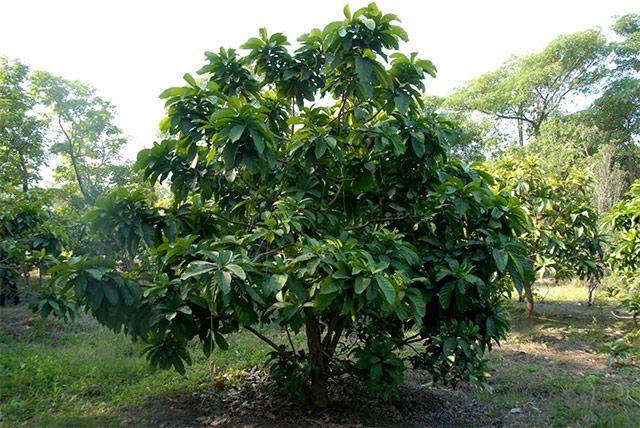
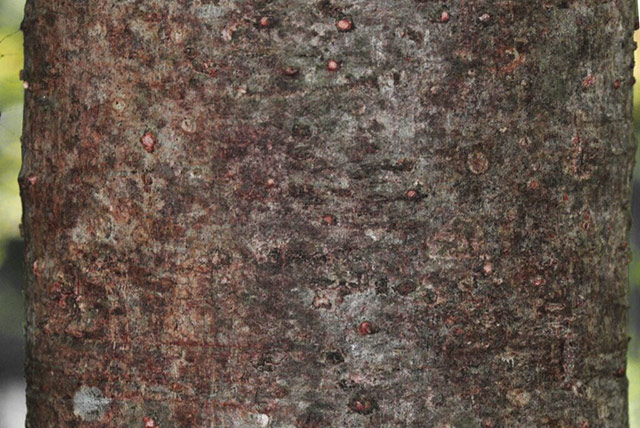
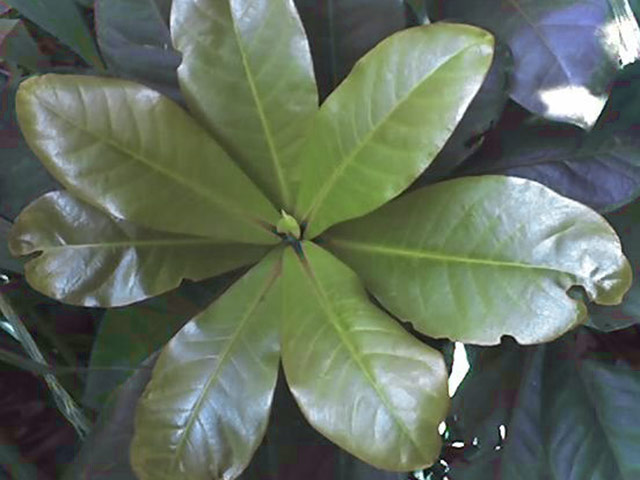
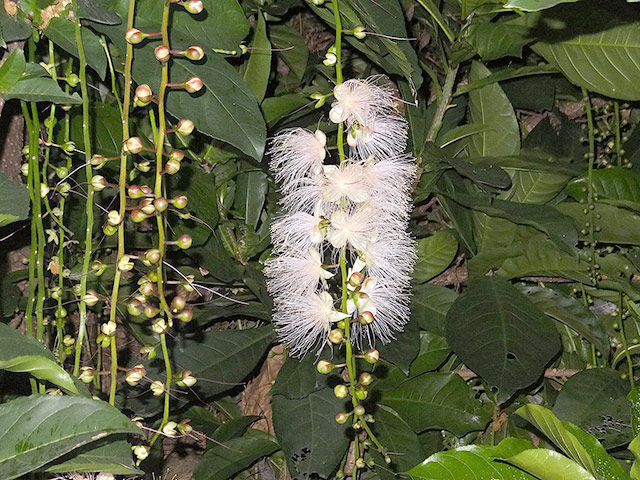
Swamp Fig
(Ficus trichopoda)
Zulu umvubu
Xhosa: umvubu
Alternative English name(s): Hippo Fig
National Tree number: 54
Status: Least Concern
The swamp fig is the only indigenous fig species in the southern African region whose aerial roots develop into new stems like the banyan of India (Ficus benghalensis). The natural habitat is in swamps and swamp forests, usually close or next to permanent water. Fig trees in general can be regarded as an ecosystem on their own and contribute immensely to the diversity of many species where they grow.
Trunk / bark: Bark is mostly pale and smooth with some mottling. It becomes darker in older trees. A characteristic of all figs (and the family) is their milky sap. It has a rounded, spreading crown and may spread further sideways, creating a grove, by sending down aerial roots which become new stems (i.e. banyan growth).
Height: May grow as either a large shrub or medium-sized tree. The height is recorded as being 12-21m.
Leaves: Dark green above and velvety blueish-green below. Veins are conspicuous, yellowish-white above and red below. The sheaths enfolding the apical buds and the leaf stalks are also red. Oval in shape and leathery in texture.
Flowers: The swamp fig is monoecious (where both male and female reproductive structures are present on the same fig fruit, but their development is separated in time). As with all figs, the inflorescence is a syconium. The syconium is a unique feature of the fig - essentially it is a flowerhead that has closed in on itself to make a hollow sphere, lined by tiny flowers. The pollination of figs is unique and complex. It is performed by minute wasps (each fig species has a specific wasp pollinator) which enter the fig through a tiny hole called an ostiole. Figs which are ready for pollination release a specific chemical to attract pollinators. These are female wasps who battle their way into the fig and in the process lose their wings and most of their antennae! It is a one-way ticket as they do not leave the figs again. These receptive figs are in the female phase and the wasp (who is carrying pollen from the fig where she was born) pollinates some of the florets and lays eggs in the ovules of others. The ostiole closes up after pollination and during this 'interfloral phase' the fig becomes ready for the 'male phase' and the wasp eggs complete their life cycle. When the male flowers produce pollen, the new generation of wasps emerge and mating takes place inside the figs. The wingless male wasps chew escape holes in the fig wall for the now mated females to leave. They are carrying pollen from the male flowers and set off to find a receptive fig and start the whole cycle again.
Fruits: When male flowers have finished producing pollen, the fig ripens and becomes attractive to fruit-eating animals which disperse the seeds. Figs appear predominantly in spring, although they may be found all year round. They ripen by first turning orange and then a brilliant red. The figs of F. trichopoda are slightly more flattened top and bottom than the common domestic fig, Ficus carica. The seeds are contained within the fig.
Ecology: Figs are an important food source for many animals including monkeys, bats, antelope and birds. Fruit-eating birds attracted to figs include the African green pigeon, African olive pigeon, bronze-naped pigeon, turacos, hornbills, parrots, starlings and barbets. Butchart suggests that it is also possible that the fallen, floating, brilliantly coloured figs are attractive to waterfowl such as the African pygmy goose and also to fish species such as the Banded Tilapia and the Silver Catfish. Seed-eating birds such as doves, canaries and firefinches feed on any fallen, dried seeds beneath the tree as do some game birds such as guineafowl and francolin. Insect-eating birds and animals such as geckos feed on the wasps when they emerge from the figs. This emergence can happen en masse at times and will apparently even attract aerial feeders such as swallows and swifts who then roost nearby to take advantage of this boon. The fig and wasp eaters themselves attract predators such as shrikes, raptors and snakes, making the swamp fig a centre of activity. F. trichopoda is host to Acrocerops ficina, one of the leaf-mining moth species.
Cultivation: The swamp fig doesn’t make a good garden tree due to its need for a large amount of permanent water and a very aggressive root system.
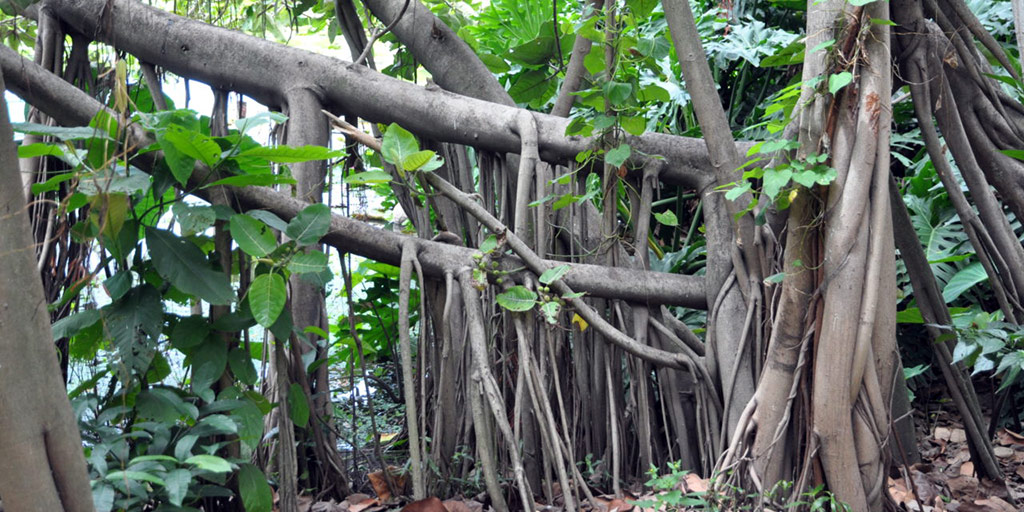
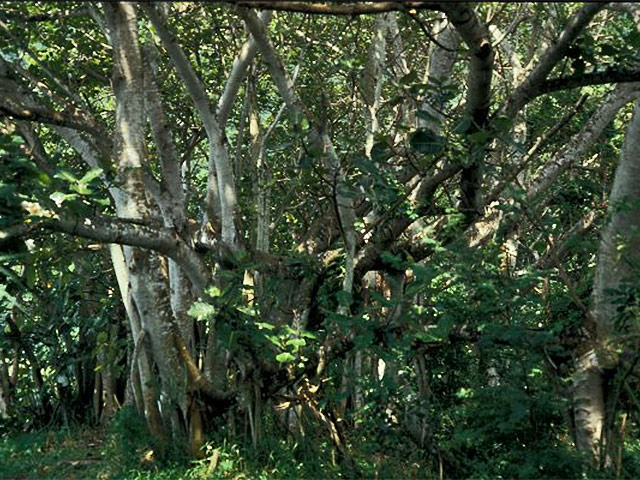
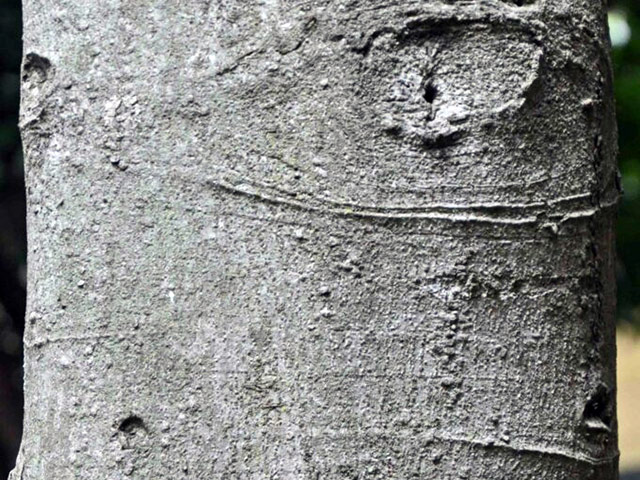
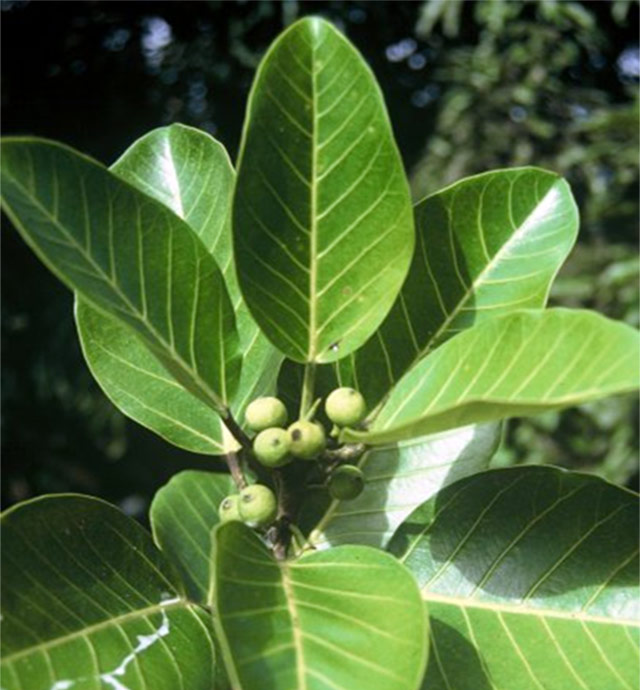
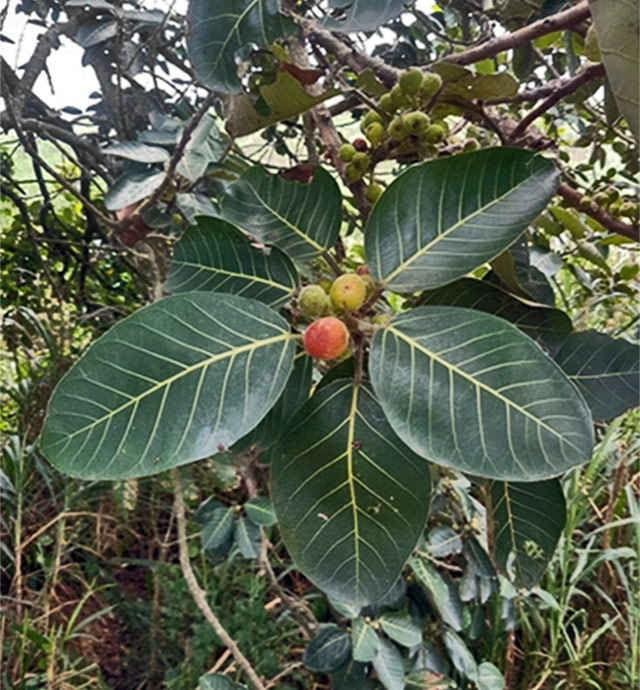
Pondo Bushman's Tea
(Lydenburgia abbottii)
Zulu: -
Xhosa: -
Alternative English name(s): -
National Tree number: 407
Status: Endangered
Pondo Bushman’s tea is one of the rarest trees in South Africa, occurring in the wild in ravines and riverine forests in just two deep river gorges on the KZN/EC border and less than 10km apart. This tree is endemic to South Africa.
Trunk / bark: In steep areas it grows with a single, erect stem; in flatter areas, it may have several coppicing stems. The main stem is tall and straight with buttresses. Bark is greyish, smooth with unevenly flaking scales and the under bark is slightly orange. Branchlets on young stems are reddish brown with large stipules that fall early, to leave prominent scars between petioles.
Height: A tall forest tree, up to 30m high.
Leaves: Softly leathery leaves are in an opposite arrangement (alternate on young branchlets). Leaves are elliptic-oval in shape, narrowed to the base with a twisted tip, dark shiny green above, dull whitish-green below and hairless, with 4-6 pairs of horizontal veins prominent on both surfaces; blunt glandular tips; margin with hard-tipped teeth (scalloped) and young leaves bright red.
Flowers: Small, white, sweet-smelling, in axillary clusters and expanded beyond the leaves. Flowering time is in spring (September to October).
Fruits: Slender, 3-lobed capsule, produced in summer and winter. Capsules contain up to 4 wingless seeds, without an aril, with an oily endosperm. Although birds relish the fruit, it is not abundant as the flowers are attacked by a gall-forming insect.
Ecology: Flowers are visited by bees and other insects. The fruits of this tree are eaten by birds.
Cultivation: Very little to be found on cultivation. There are, however, a few nurseries in SA who are selling saplings.
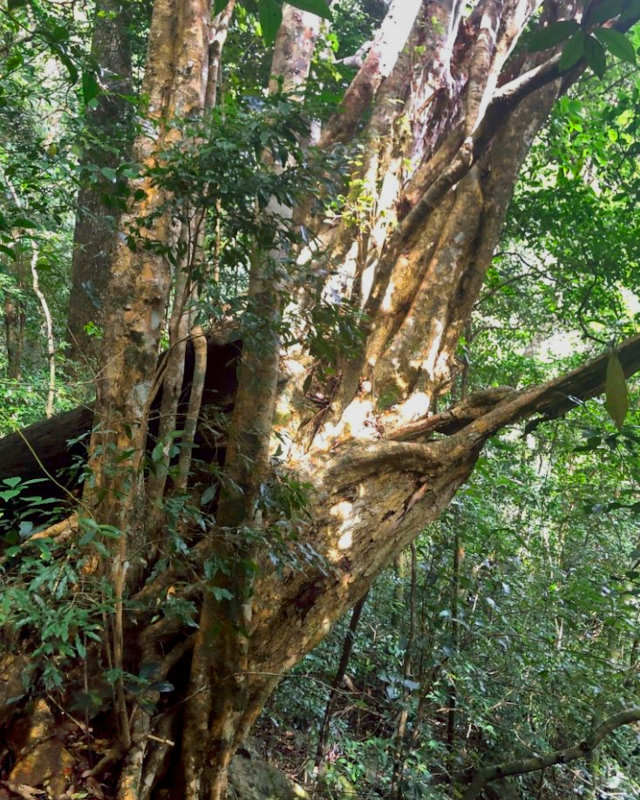
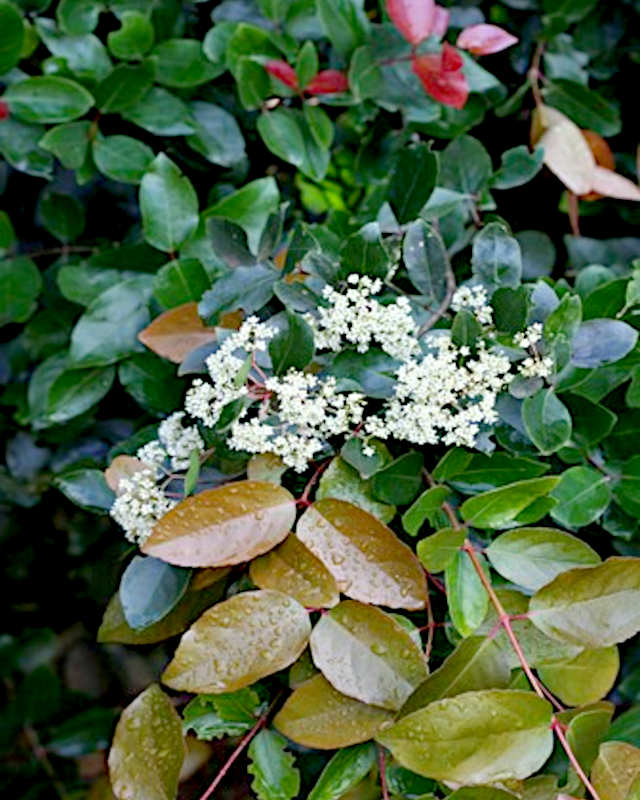
Coastal Red Milkwood
(Mimusops afra - formerly Mimopsus caffra)
Zulu: mhayihayi amasethole-abomvu, umthunzi, umnweba waselwandle, umnole, umagayi, umkhakhayi
Xhosa: umhlophe
Alternative English name(s): -
National Tree number: 583
Status: Least Concern
This evergreen tree is very suitable for east coastal gardens with very windy conditions. Found in coastal dune vegetation. This tree has a dense, spreading crown.
Trunk / bark: Trunk is sometimes tall and twisted but branches low down. Bark is dark grey, thin and wrinkled longitudinally. Young stems are densely covered with long, rust-coloured hairs. Wood is reddish and closely grained.
Height: Small to medium-sized tree growing up to 15m high. In an exposed habitat it forms a shrub.
Leaves: Spiralled along branchlets. Stiffly leathery, without hairs and blue-green above. They are paler green with white, silvery or yellowish silky hairs below. Leaf apex is round and frequently notched; the base is tapered. Leaf margin is entire and strongly rolled under.
Flowers: Rust-coloured, haired sepals (the outer parts of the flower that enclose a developing bud); petals are white to cream and star-shaped. Flowers are on slender stalks in auxiliary groups of 2 to 4.
Fruits: Fleshy, oval and bright orange-red when mature. Fruit grows profusely and is edible and pleasantly sweet.
Ecology: Fruits are the staple food of monkeys, who are primarily responsible for spreading seed. Cape parrots in the coastal forests of the Eastern Cape are also fond of the fruit. Blackbellied glossy starlings, Yellowstreaked bulbuls and bushpigs also eat the fruit.
Cultivation: Best time to sow seeds is in summer. Treat seed with fungicide before sowing to prevent damping off. It is also grown from cuttings. Dip cuttings in a rooting hormone. Use fine bark with polystyrene as the growing medium. Put the cutting in a mist unit with under-heating. It will take four to six weeks for roots to develop. After rooting, the cuttings should be removed to harden off and then potted into bags.
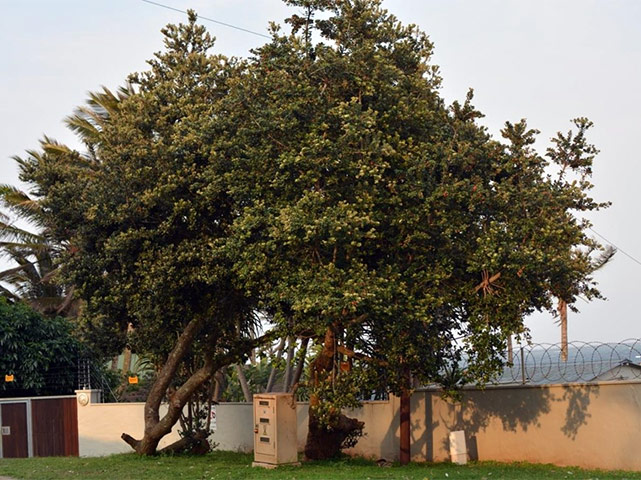
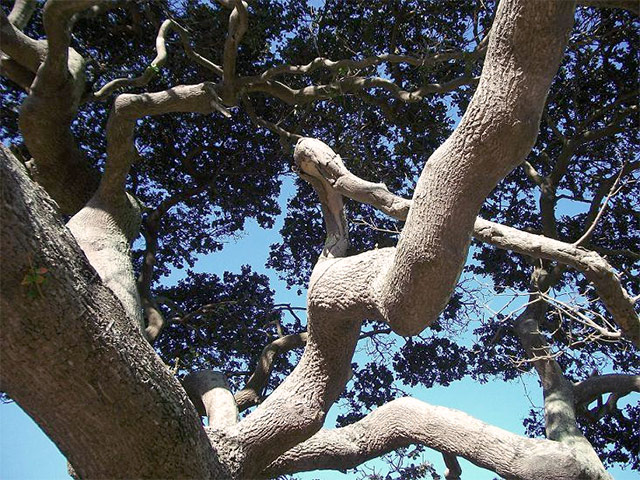
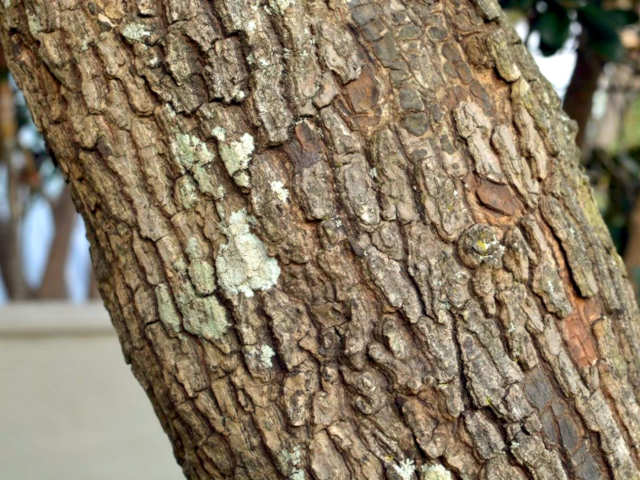
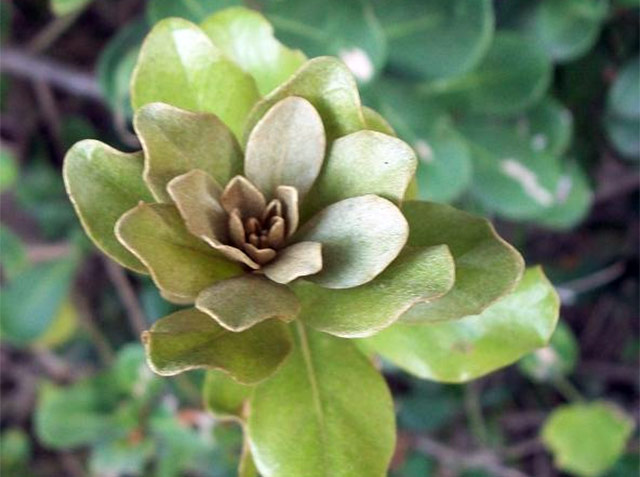
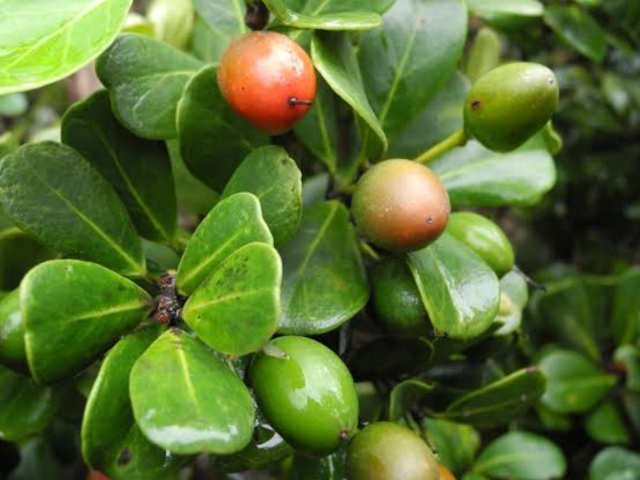
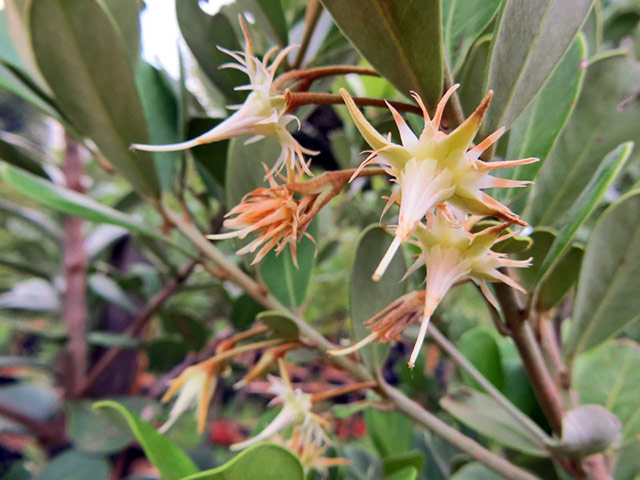
Common Yellowwood
(Afrocarpus falcatus - formerly Podocarpus falcatus)
Zulu: umsonti
Xhosa: umbhomba
Alternative English name(s): Outeniqua yellowwood, Small-leaf Common Yellowwood
National Tree number: 16
Status: Least Concern
A fast-growing evergreen tree. It is an excellent container plant and can also be decorated and used as an indoor Christmas tree.
Trunk / bark: Trunk is a dark purple-brown, with the bark being smooth and ridged on younger stems and peeling off in flakes on mature trees.
Height: Can reach a height of 45m in nature, but only around 15m in a garden environment.
Leaves: Small, narrow and arranged spirally, with parallel veins and smooth margins. The leaf tip is sharply pointed. Leaves are twisted at the base. The tree receives a new flush of bluish-grey leaves in spring, which contrast beautifully against the older, dark green, mature leaves.
Flowers / Cones: Male and female cones occur on different trees (i.e. dioecious). Male cone is brown with spiralling scales and grows from the leaf axils. Female cone has one scale bearing one seed.
Fruits: Large, yellow, fleshy fruits take a year to ripen and hang from the branches in clusters. Ripe fruit is edible and very resinous. The sap is used as a remedy for chest complaints.
Ecology: Ripe fruits are eaten by bats, bushpigs and fruit-eating birds (Cape parrots; purple-crested, Knysna and Ross’s louries; Rameron, African green and Delagorgue’s pigeons). The large, dense crown is often a roosting and nesting site for various birds.
Cultivation: Remove fleshy part of the fruit to expose the seed. This process is very important as the fleshy part contains an inhibitor, which seems to suppress germination. The fresh seed can be sown directly into black nursery bags or into deep seed trays using a mixture of well-rotted compost and washed sand (1:1). The seed must be pushed and bedded into the mixture and covered with a light layer of soil. The mixture must stay moist at all times. Some of the seed may take up to six months to germinate, so be patient. Seedlings can be pricked out at a height of 50-80 mm and planted into bags or pots. Care must be taken not to damage the taproot as this may slow the initial growth rate of the plant.
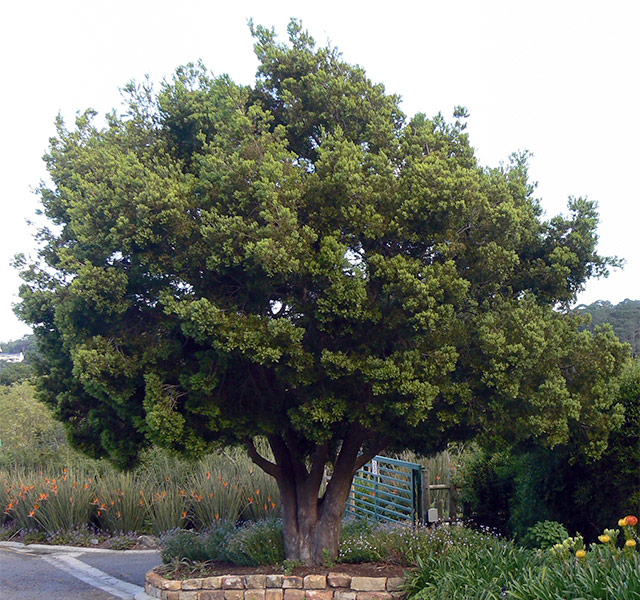

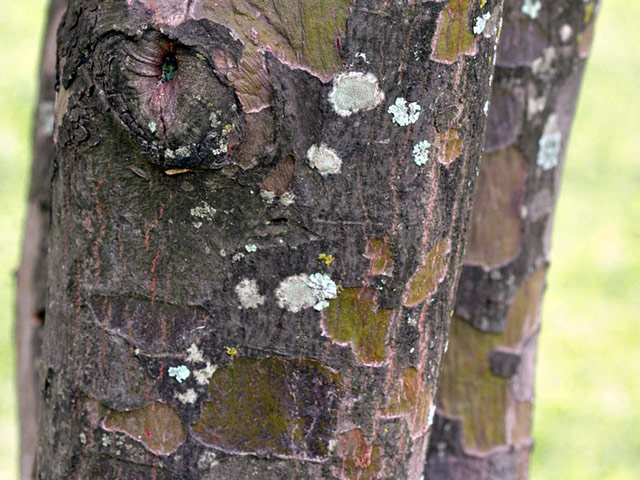
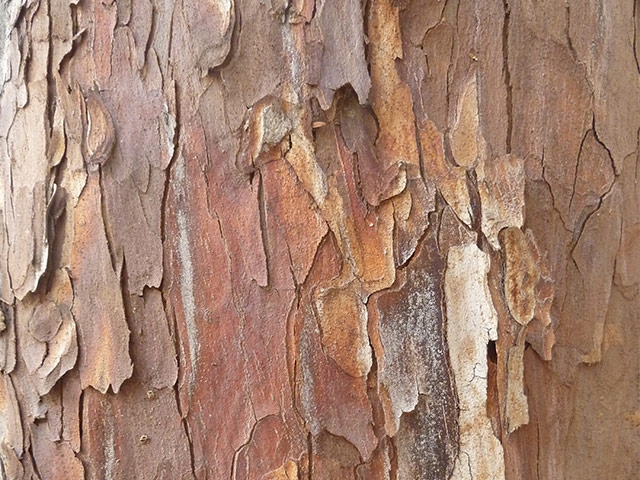
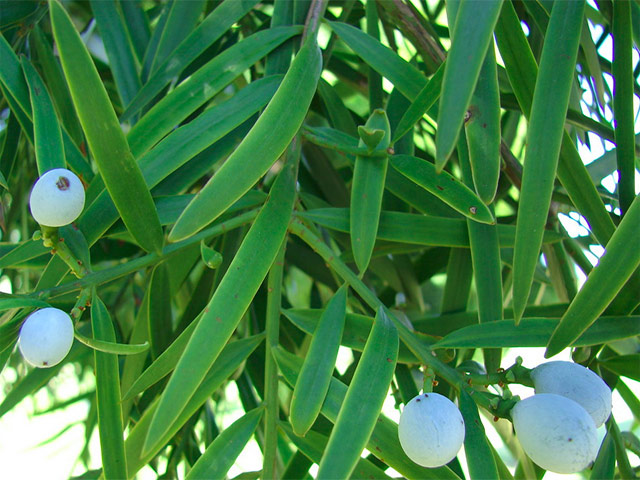
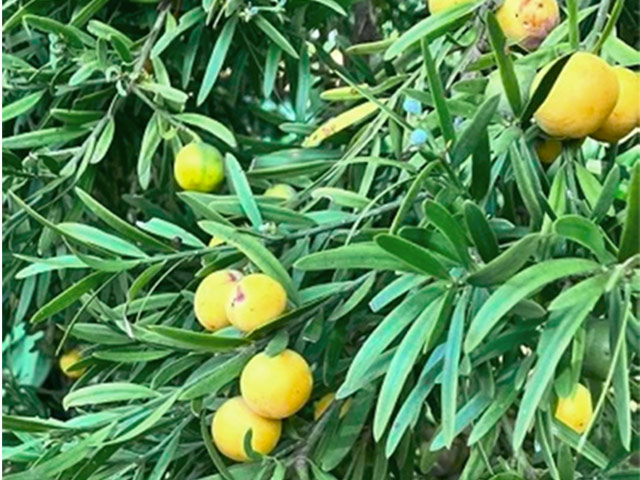
Broad-leaf Yellowwood
(Podocarpus latifolius)
Zulu: umsonti
Xhosa: umkhomba
Alternative English name: Real Yellowwood
National Tree number: 18
Status: Least Concern
South Africa 's National Tree. Slow growing, long-lived and evergreen. The leaf size and interesting bark are good characteristics for bonsai. This tree makes an interesting container plant.
Trunk / bark: A straight stem/trunk and the wood is yellow. Bark is greyish and smooth when young but shows characteristic vertical fissures as it matures. The bark peels off in strips.
Height: Usually large, growing to 20m or 30m. Under some conditions, the tree does not grow more than about 2m but looks very old and full of character.
Leaves: Glossy dark green leaves which are thick and narrow. Leaves on young trees are always larger than on mature trees. New leaves are very noticeable as they form clusters of pale green or bronze at the ends of branches, compared to the dark green of the older leaves.
Flowers / Cones: Male and female cones occur on different trees (i.e. dioecious). Male cones (July to September) resemble catkins, an inflorescence adapted for wind pollination. Female cones are fleshy; bright red, pinkish, or magenta receptacles (or arils) that usually only enclose a single seed.
Fruits: Female tree develops round, grey/blue fruit on thickened, fleshy, stalks known as receptacles. As these mature, they turn purple (December to February).
Ecology: When the berry-like receptacles ripen, birds such as pigeons and turacos feed on them. They are also eaten by monkeys, bushpigs and sometimes by people.
Cultivation: Seed should be cleaned and sown fresh in a mix of sand and compost. Do not allow mix to dry out or germination will be poor. The seed may be parasitized if collected from the ground below the tree. Transplant with care and avoid damaging the taproot. The expected growth rate in cultivation is quite slow, but this depends on conditions. It will grow better with good soil, water and shelter from strong winds. It does not usually grow as tall in cultivation as it would in its forest habitat, especially if not given a good water supply.
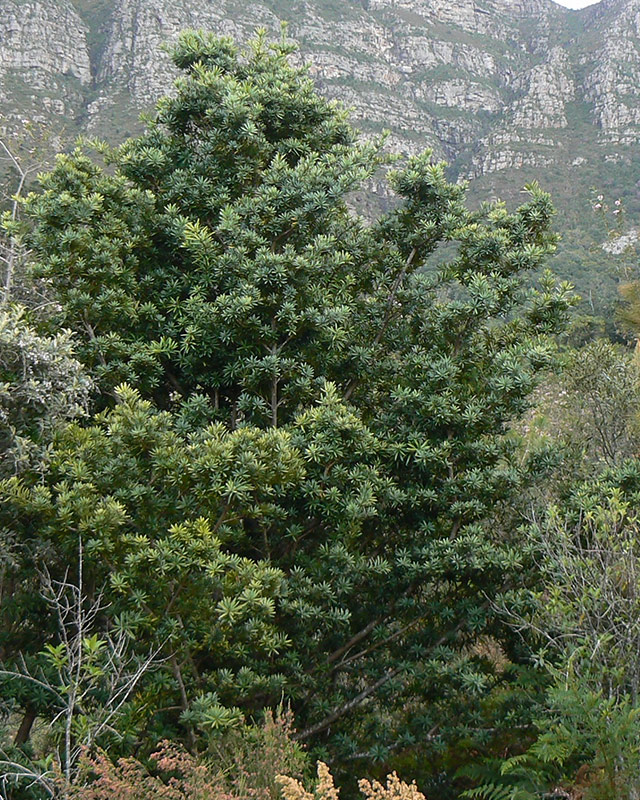
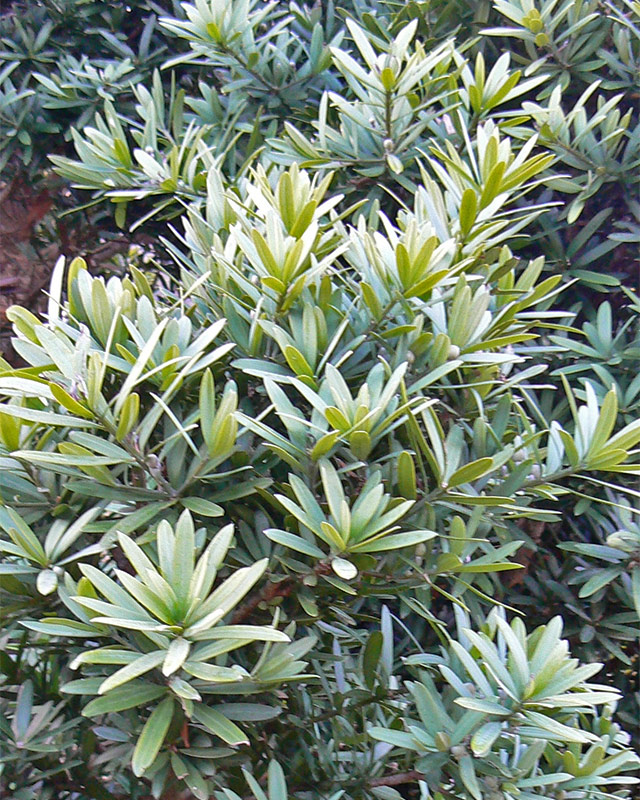

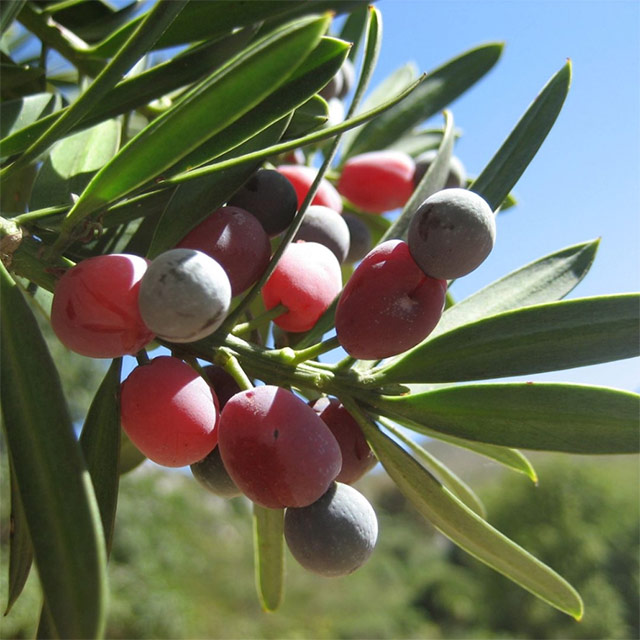
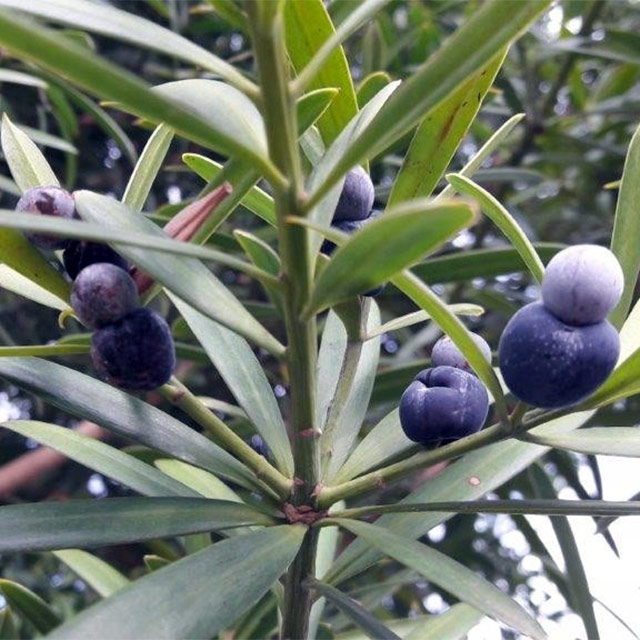
White Milkwood
(Sideroxylon inerme)
Zulu: aMasethole-amhlope, uMakhwela-fingqane
Xhosa: aMasethole, umQwashu
Alternative English name(s): -
National Tree number: 579
Status: Least Concern
Evergreen tree with a large, dense, rounded crown. This species is commonly found in dune forests, almost always in coastal woodlands and also in littoral forests (i.e. forests along the sea shore). It can also be found in inland bushveld. A special feature of this tree is that it makes an excellent firebreak. Several specimens of this tree are provincial heritage sites.
Trunk / bark: Bark is normally grey-brown to black and is rough with rectangular cracks. Young branches are always covered with fine hairs.
Height: Small to medium tree which grows to a height of 10-15m.
Leaves: Dense foliage. Leaves are leathery and spirally arranged, dark green above and dull beneath with a pale midrib protruding. Fine, rusty hairs are also found below on young leaves. The leaves contain milky latex.
Flowers: Small greenish-white flowers with a strong, unpleasant smell. Flowers during summer and autumn (November to April).
Fruits: Purplish-black, small, round, fleshy, also containing milky latex. Present from late summer to spring (February to September).
Ecology: Speckled mousebirds eat the flowers. Birds, bats, monkeys and bush pigs eat the fruit.
Cultivation: Can be grown from cuttings but only semi-matured side shoots should be used. Cuttings however should be placed in a mist unit with bottom heating. Cuttings should root within 6 to 8 weeks and after rooting should be hardened off for two weeks. The cuttings should then be potted up in a well-drained soil mix. But results have shown that seed sowing is the best method of propagation. Collect fruits and remove the flesh before sowing the seeds. Sow seed in a sandy, loam soil mix in a seed tray. Keep the tray moist in a warm place that will enhance better germination. Seeds should take 4 to 6 weeks to germinate. Sow seed in summer. This is a semi-coastal tree but direct sea wind can result in considerable burn damage from salt-laden wind, so it should be planted where a windbreak offers it some protection from the sea wind.
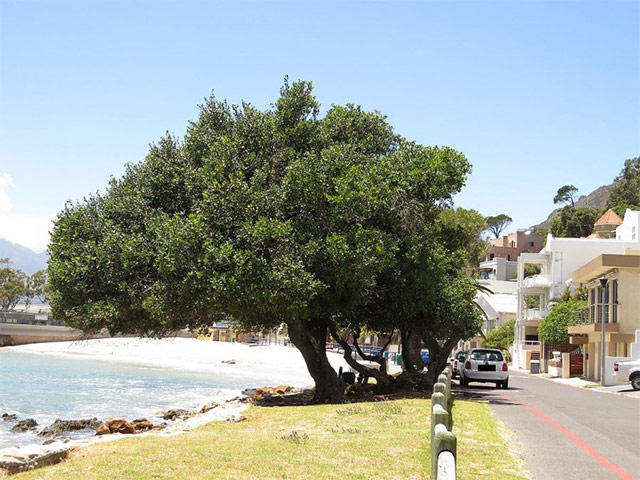
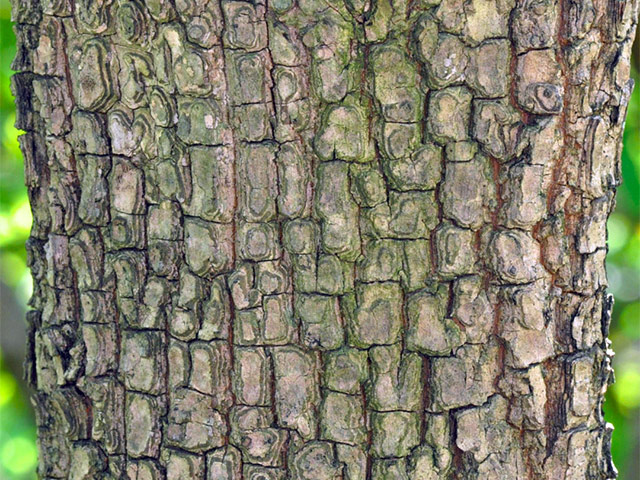
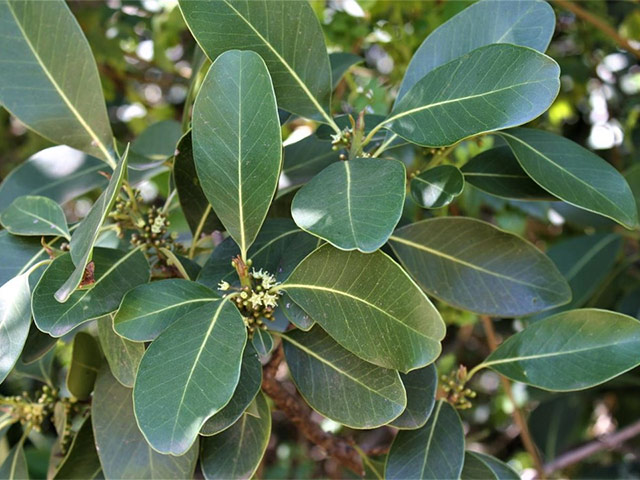
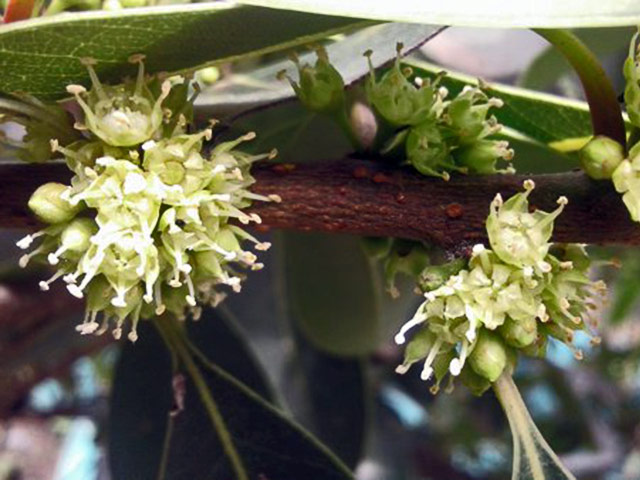
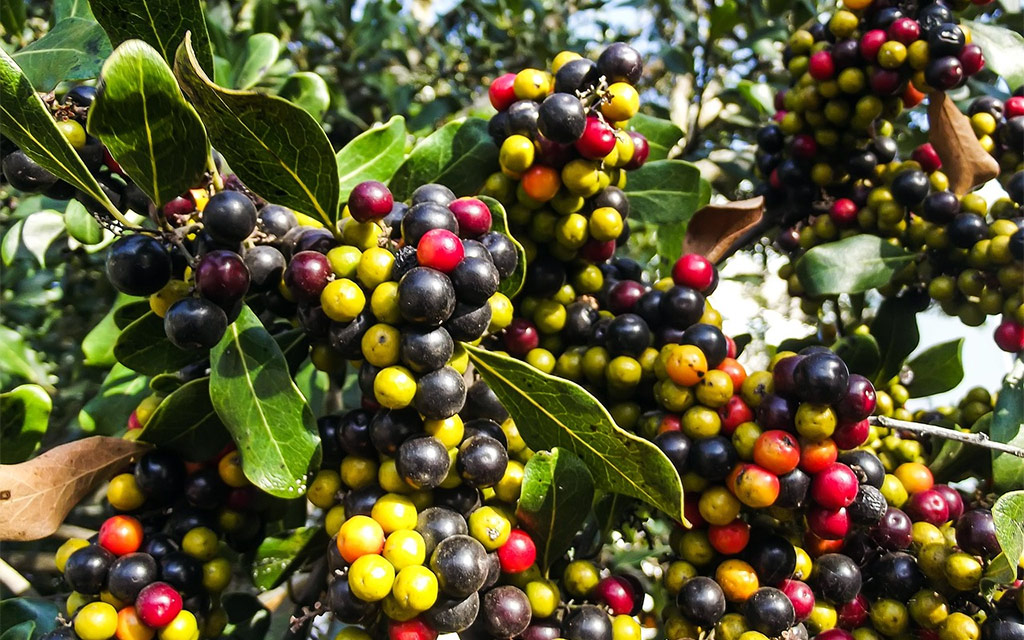
Black Stinkwood
(Ocotea bullata)
Zulu: umnukani
Xhosa: umhlungulu
Alternative English name(s): Black Stinkwood, Cape Laurel
National Tree number: 118
Status: Endangered
A large evergreen tree suitable for big gardens. The common name stinkwood is derived from the unpleasant smell of the freshly cut wood, as well as the strong smell released when leaves are crushed.
Trunk / bark: Wood is light cream through to brown and almost black. It is finely textured and fairly heavy.
Height: A tall tree, growing to 30m in height.
Leaves: Dark and glossy green with blisters or bubbles on the upper surface, known as bullae, hence the specific epithet bullata. The leaf margins are wavy.
Flowers: From December to February, but sporadically later in the year in some places.
Fruits: Following flowering, fruit produced in cups rather like those of the acorn.
Ecology: Birds such as Rameron and the Delegorgue's pigeons and the Cape parrot favour the fruits of stinkwood.
Cultivation: Propagated from cuttings, but has a low rooting success. Seed in the wild is parasitized and the regeneration potential is reduced. Seed must be picked, cleaned and sown immediately. Seed takes up to 30 days to germinate. This is a fairly fast growing tree if happy with its position, but stinkwoods are reported to be fussy and do not transplant easily. They prefer a shady forest location.
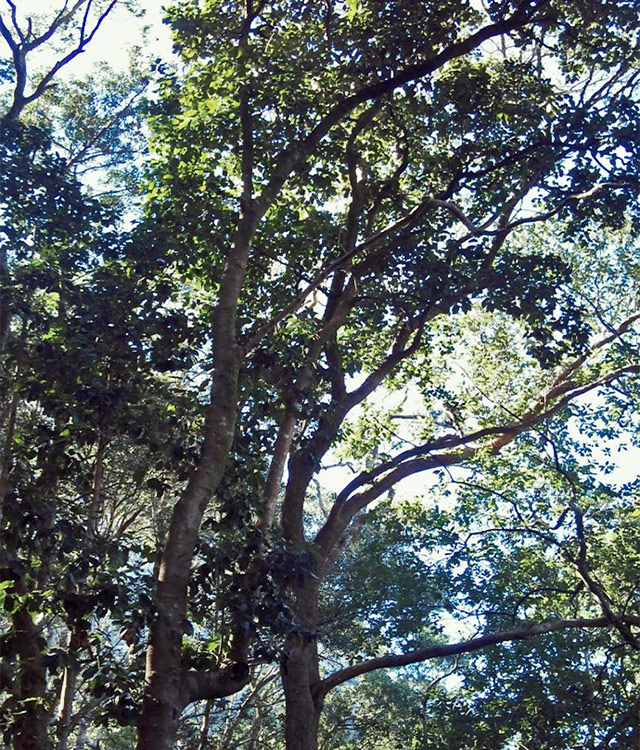
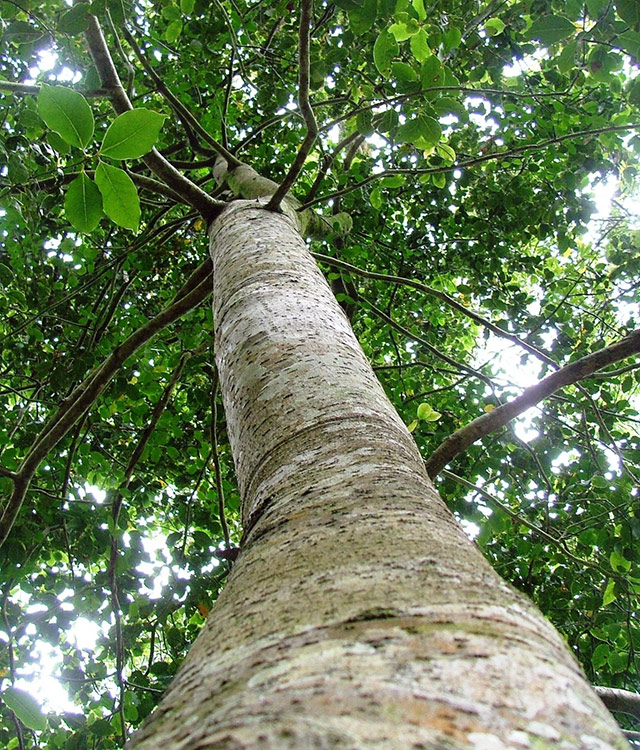
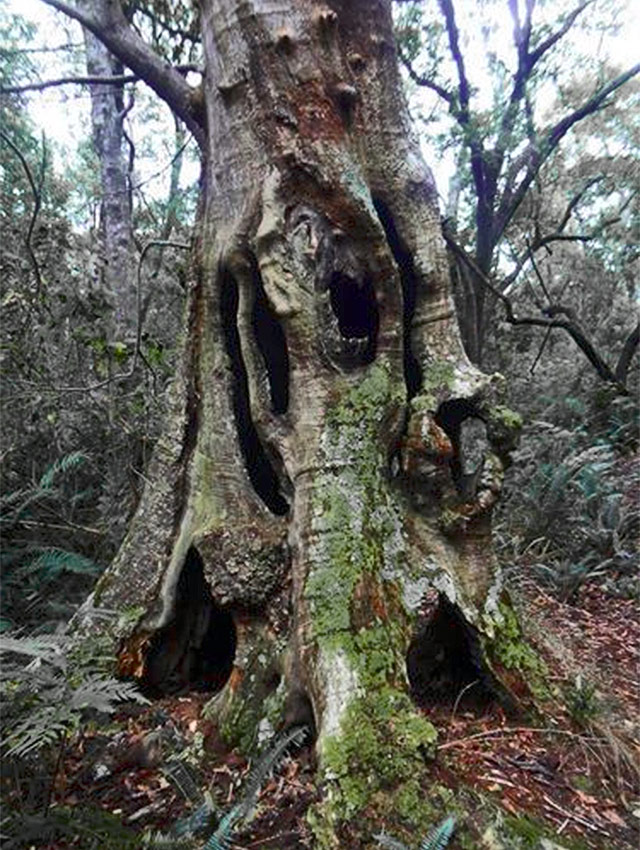
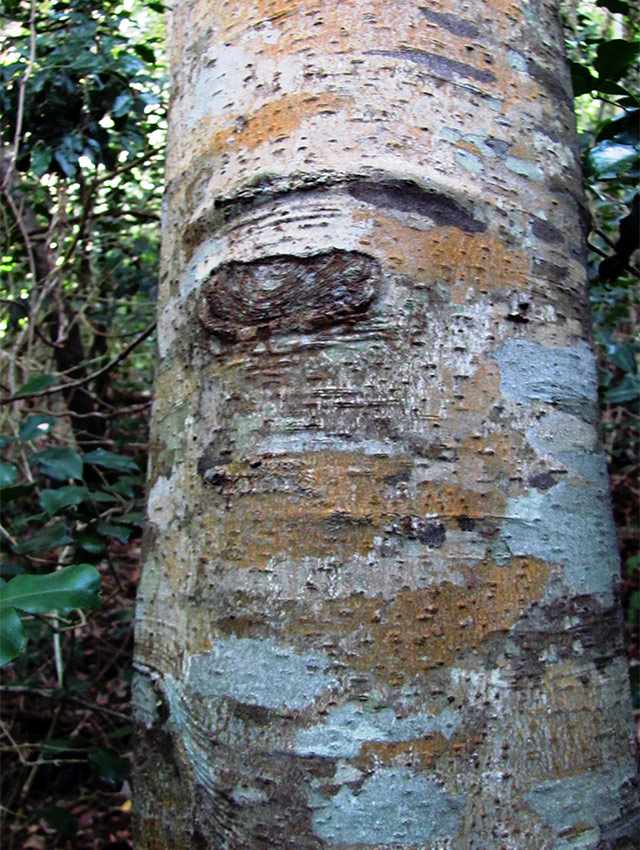
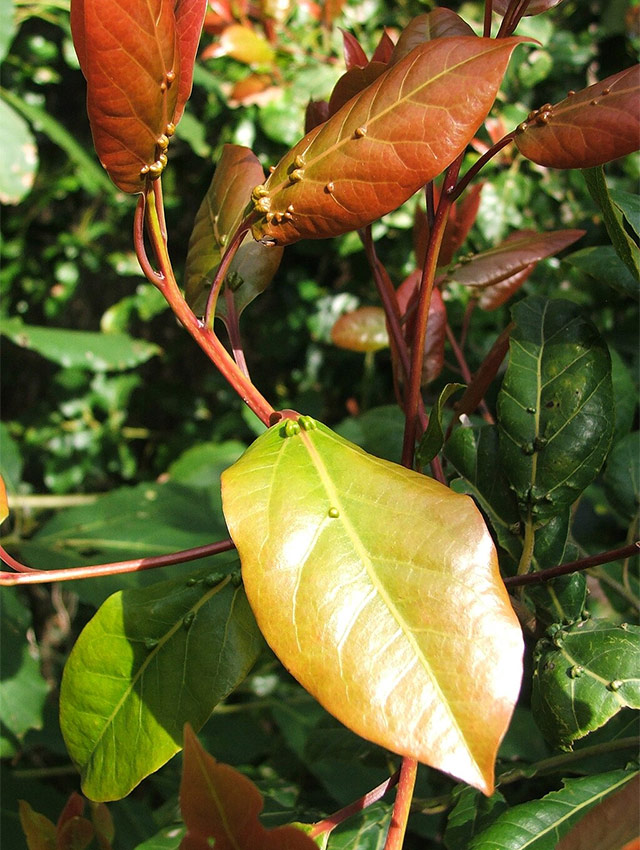
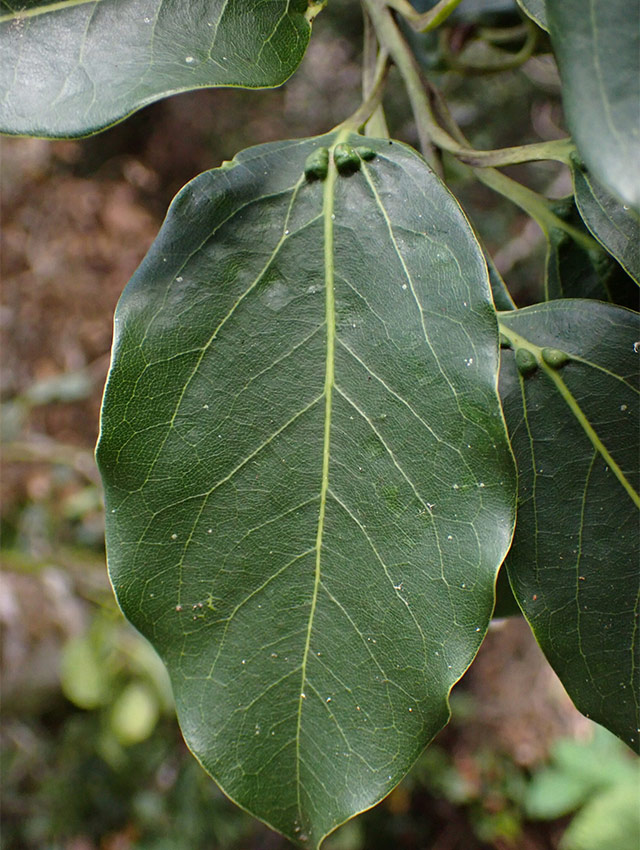
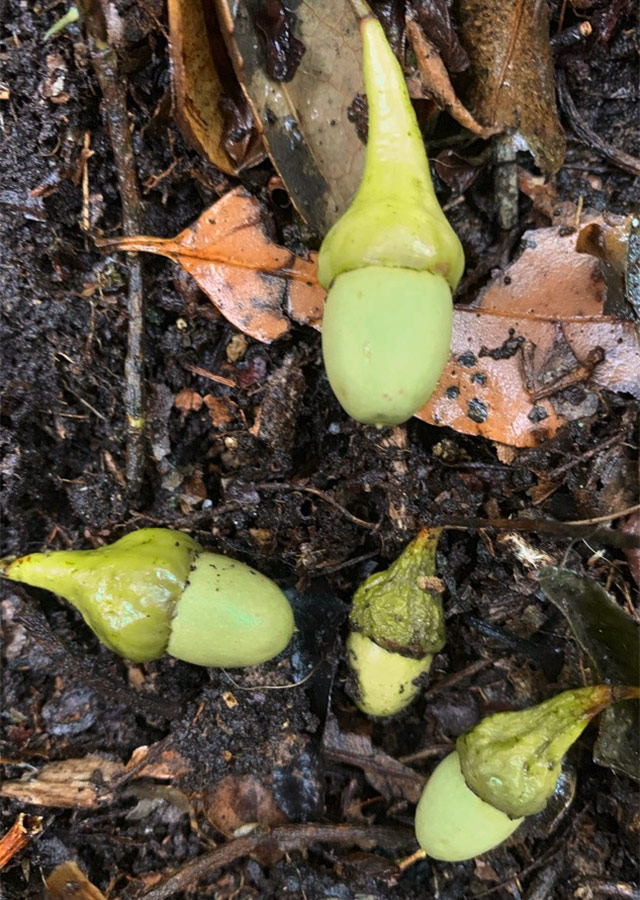
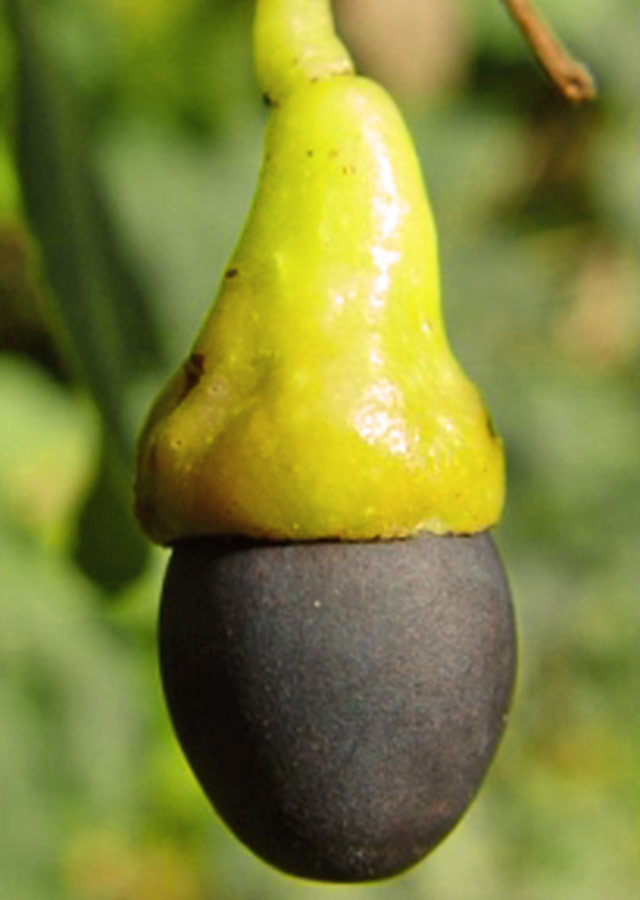
Cheesewood
(Pittosporum viridiflorum)
Zulu:umVusamvu, umkhwenkwe, umphushamvu, umphushane
Xhosa: umgqwengqwe
Alternative English name(s): White Cape Beech
National Tree number: 139
Status: Least Concern
This makes a good garden plant, growing in either full sun or semi-shade. A well-shaped, medium-sized tree but can be pruned into a hedge. Useful for screening and can also be grown in big containers as a patio plant. Hardy, neat and undemanding; makes an ideal plant for small, town house gardesn as it does not have an aggressive root system. Not only does it have fragrant flowers to scent the evening garden, it is also colourful when in fruit and attracts birds to the garden.
Trunk / bark: Trunk features horizontal markings. Bark is pale brown to greyish with distinctive white dots (lenticels).
Height: Varies in size from a shrub of about 4m to a medium tree in a garden setting. In a forest setting, can grow up to 30m.
Leaves: Dark green and glossy and are usually wider above the middle. Leaves are spiralled at the end of branchlets and emit a resinous smell when crushed. There are three small dots in a triangle shape in the cross section of a broken-off stalk.
Flowers / fruit: Small, greenish-white to creamy-yellow, sweetly fragrant flowers are produced in early summer (November to December). They grow in dense clusters at the end of branchlets.
Fruits: Small, yellow-brown seed capsules. This plant is very showy when the capsules split open to release numerous small, shiny, orange-red seeds, which are covered in a sticky, resinous exudate.
Ecology: Many birds, including the Red-eyed Dove and several starlings eat the seeds. Goats and game (Kudu, Nyala, and Bushbuck) browse the leaves.
Cultivation: Propagates easily from seed. Unparasitised seed has a germination percentage of 80-90%. Sow seeds in trays in a mixture of river sand and compost; cover lightly with fine compost and keep moist. Seeds should germinate in 8-12 weeks and the fast growing seedlings should be bagged up when they have two leaves. Plants may also be propagated by means of softwood or semi-hardwood cuttings. This plant transplants easily. Pittosporum viridiflorum prefers well-drained soils and a reasonable amount of water.
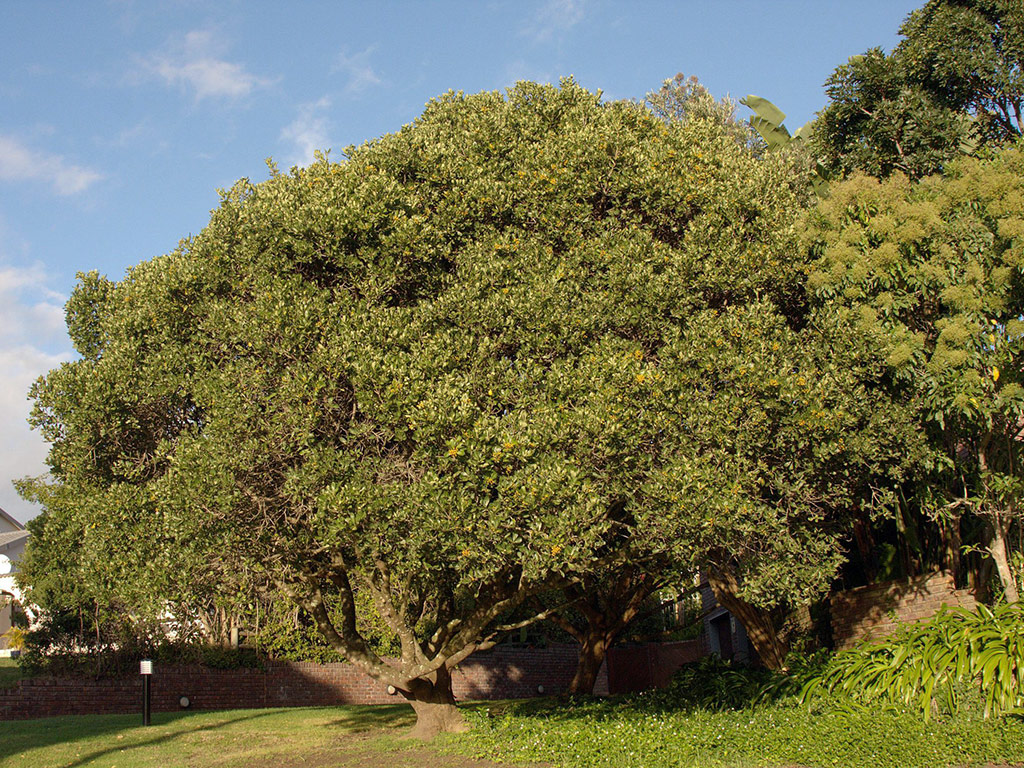
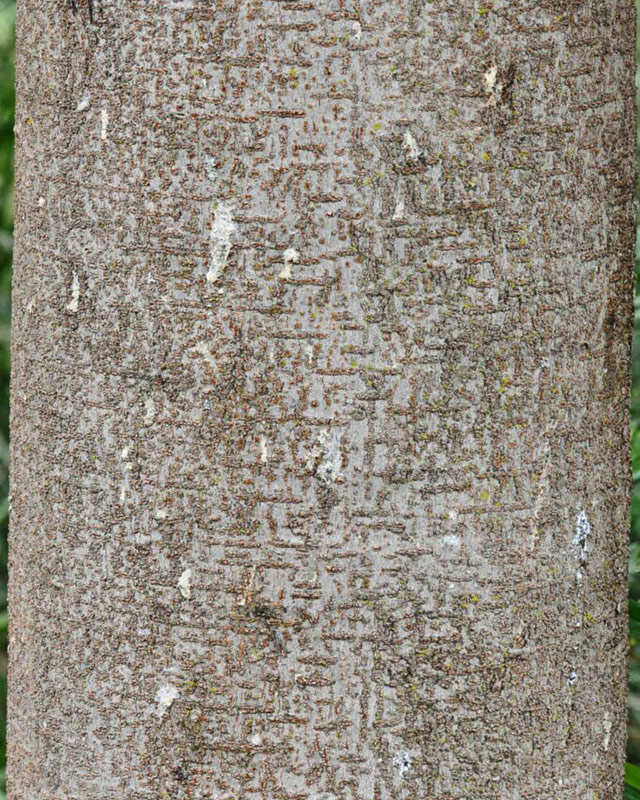
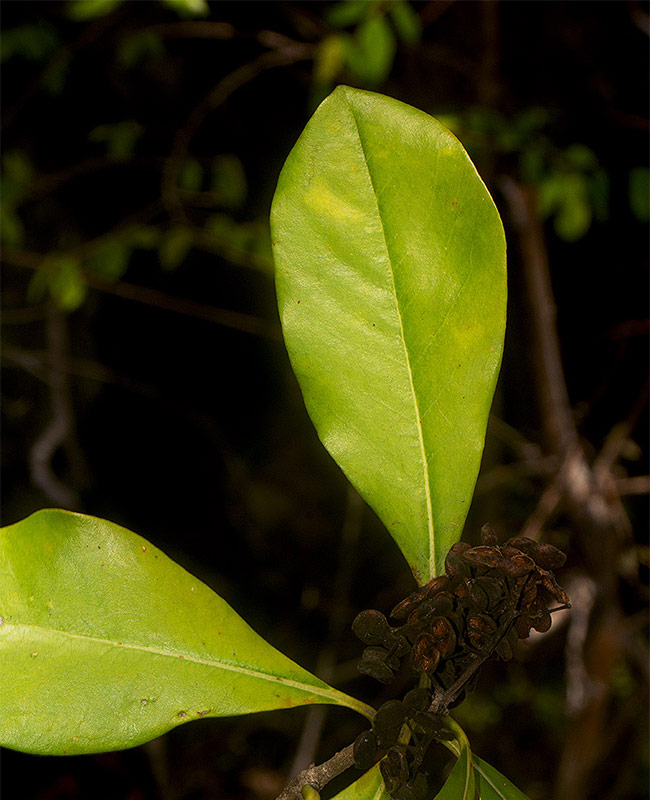
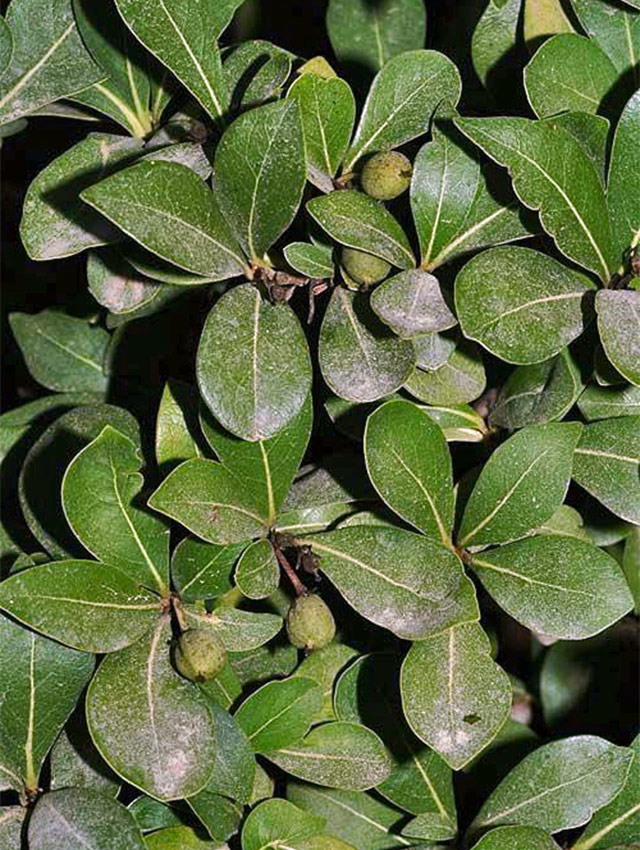
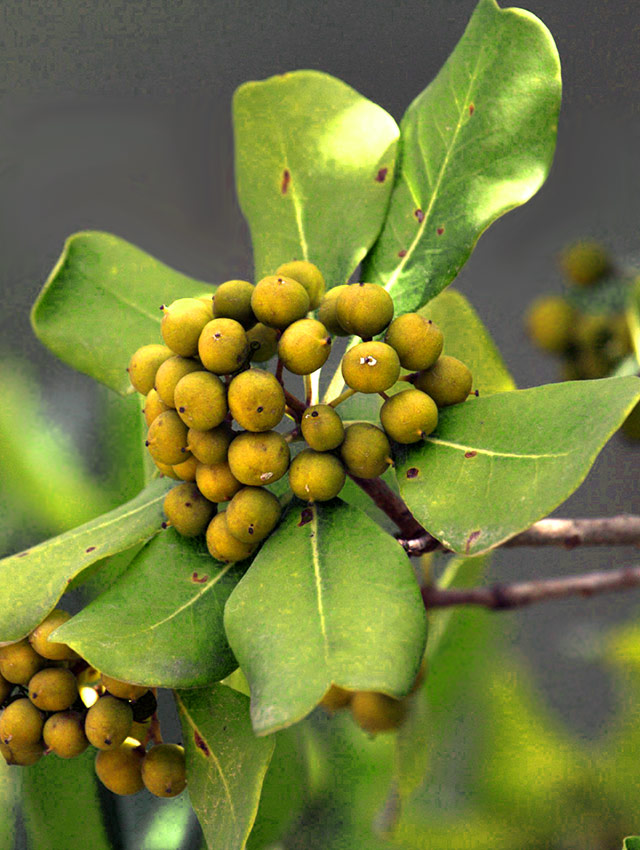
Pondo Poison Pea
(Tephrosia pondoensis)
Zulu: -
Xhosa: -
Alternative English name(s): -
National Tree number: 226
Status: Endangered
Pondo poison-pea is a rare species that is found in low numbers in only a few small, isolated subpopulations between Oribi Gorge and the Msikaba River, in Pondoland scarp forests and adjacent grassland on sandstone, in forest margins, along drainage lines or on rocky outcrops. This is the only Tephrosia with an arborescent habit, meaning that it grows in a tree-like manner, resembling a tree in its structure and appearance. Other species of Tephrosia are generally herbs, suffrutices (i.e. intermediate between a herb and a shrub) or small shrubs. The plant's root powder is believed to be toxic to fish when added to water, hence the common name Pondo poison pea.
Trunk / bark: Branchlets angled, sparsely hairy or velvety.
Height: Shrub or small tree, 3-5m in height and with a 2-4m spread.
Leaves: Evergreen. Leaves are compound; leaflets in 3 or 4 pairs, plus a terminal one. Upper surface hairless, underneath may be slightly hairy. Apex rounded, flattened or notched.
Flowers: Flowers are orange, pea-like (like the sweet pea), large (up to 20 mm long), in compact terminal sprays, with buds covered in hairs. Flowers in early summer (November-December).
Fruits: Flat and narrow pods, green maturing to brown in late summer (February - March) which split to release seeds.
Ecology: Limited information available. Said to be visited by carpenter bees that are assumed to do the pollination, and large red ants (resembling sugar ants) also visit the inflorescences and seem to get some reward from the base of each flower.
Cultivation: Best propagated from seed (there is a supplier of seeds in SA). Soak seeds in freshly boiled water for approximately thirty seconds in order to break down the hard seed coat and promote imbibition (i.e. absorption of water by seed). Most seeds will germinate 8-10 days after sowing. As with many other legumes, this species prefers to be planted out into the ground and does not do well in containers, but can be grown in pots to achieve a good size for planting. When planting, prepare a hole twice the size of the root ball, then prepare a mix of 2 parts compost with 2 parts dug out soil and 2:3:2 fertilizer, to give a burst of new growth. Water once to twice a week to get the plant established. Plant as a backdrop or to give height in the centre of garden beds, in partly shaded areas or in a sheltered spot directly in full sun. Suitable for small gardens.
